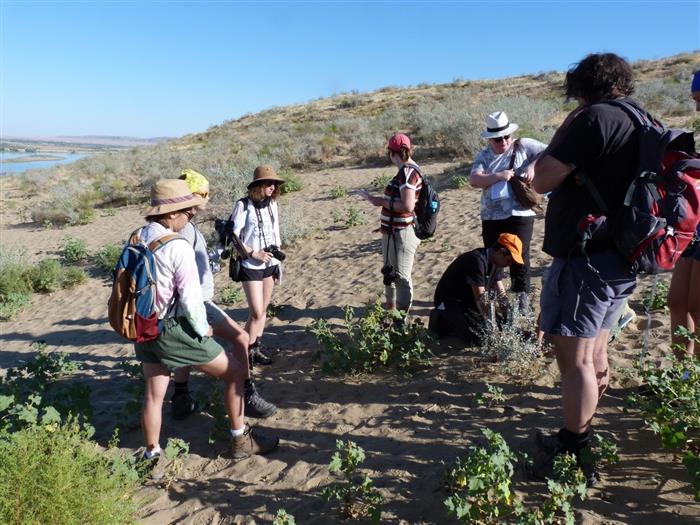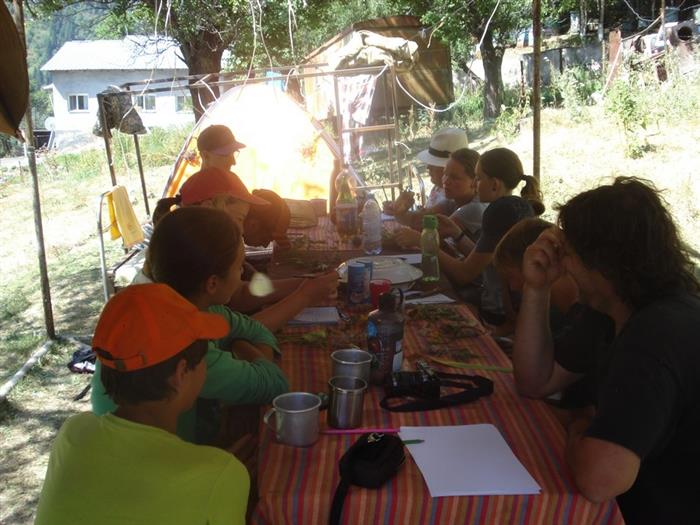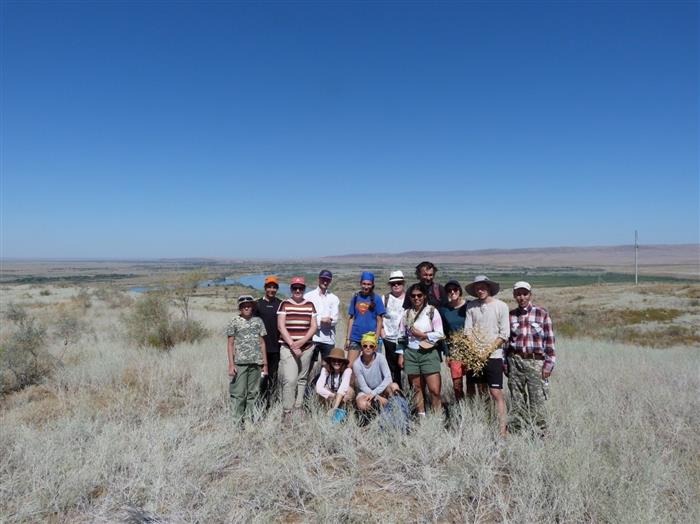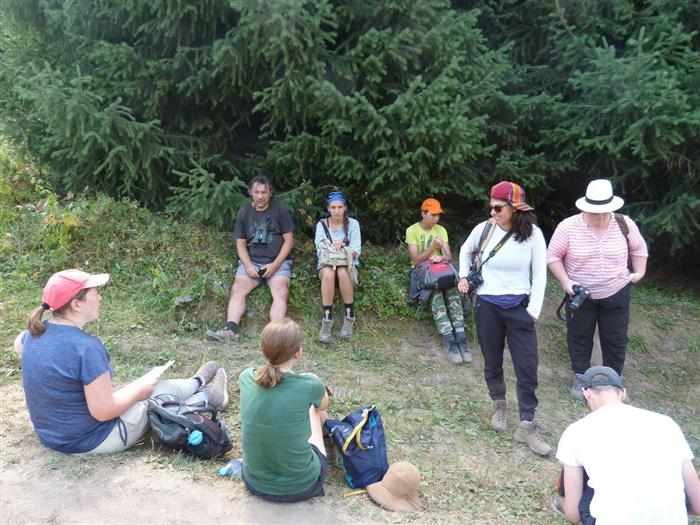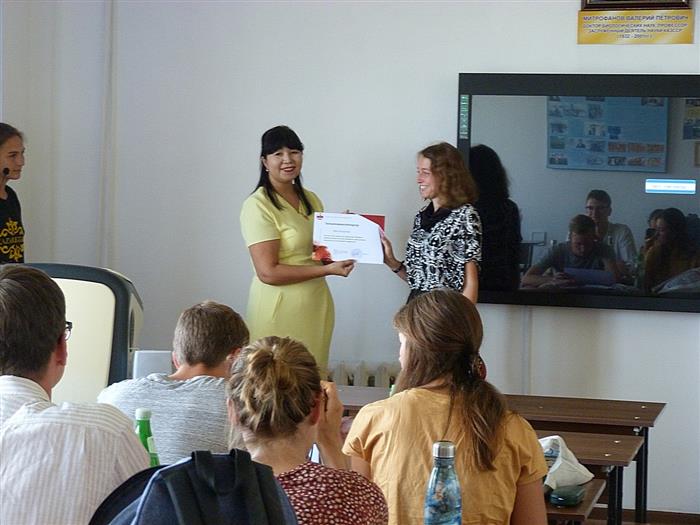«BIOLOGICAL DIVERSITY OF THE NORTHERN TIEN SHAN: FOLLOWING ON THE GREAT GERMAN NATURALISTS OF THE XIX-TH CENTURY»
Views: 1439
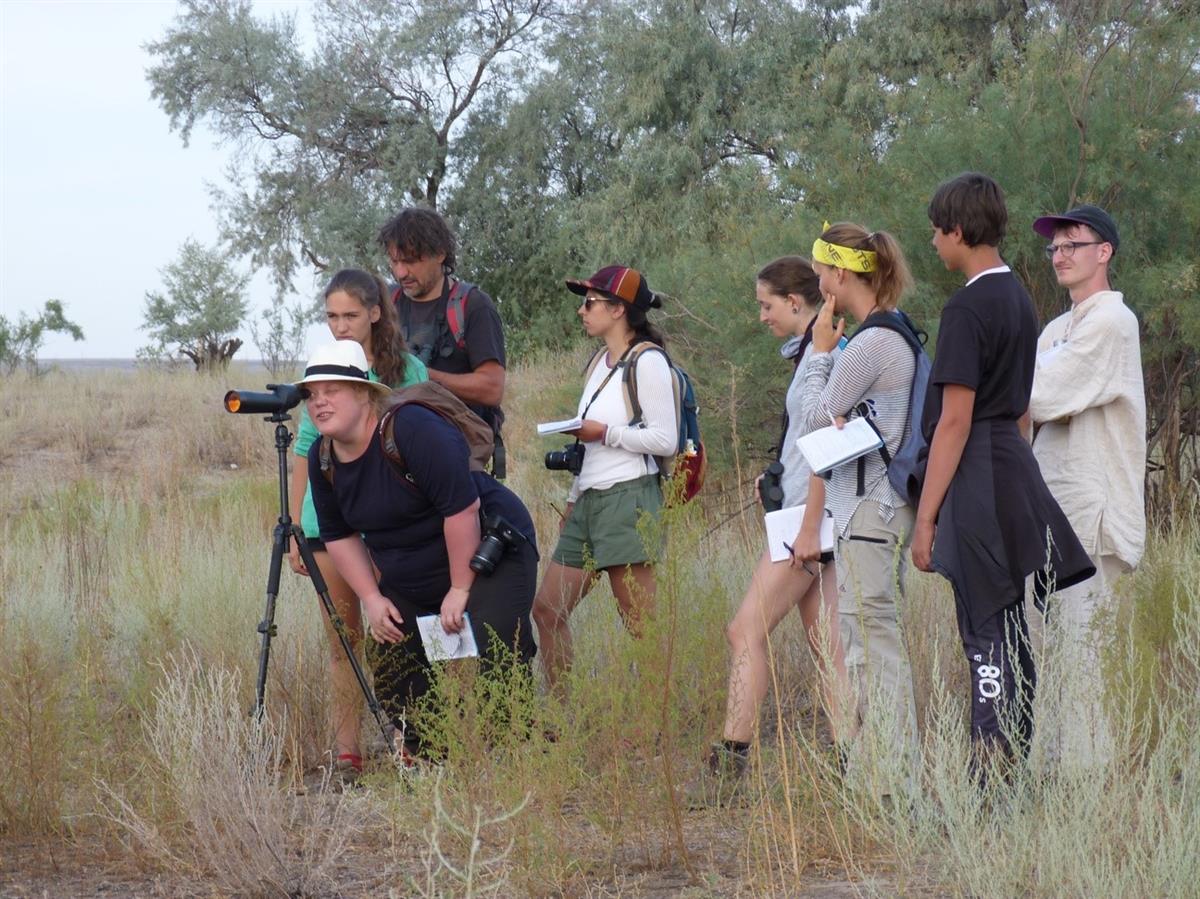
On summer ecological school «Biological diversity of the Northern Tien Shan: following on the great German Naturalists of the XIX-th century» (4-19 August 2019), stipendium program of DAAD for students from Germany
The summer ecological school was hold on by department of Bioresources and Biodibersity in Faculty of Biology and Biotechnology, Al-Farabi Kazakh National University (Almaty)
Organization Committee from KazNU:
1. Kurmanbaeva M.S., head of the department, prof. – common management
2. Mamilov N.Sh., associated prof. – head of the summer school
3. Baymurzaev N.B., senior lecturer – lessons in the field
4. Parpieva S.M., specialist - logistic
Supervisor of the summer school: Salovarov B.O., prof. – Director of the Institute of management of natural resources in Irkutsk State Agriculture University (Russia).
Kuznetsova I.B. – translation (Russia)
|
Students |
University, degree |
|
Anne Klenge |
University of Applied Sciences, Constance, Bachelor of Environmental Engineering and Resource Management |
|
Alex Krugenberg |
University of Applied Sciences (Hochschule) Neubrandenburg, Bachelor Nature conservation and landscape planning |
|
Camila Bräutigam |
University Leipzig, M.Sc. Physics |
|
Elisа Wätjen |
Georg-August University Göttingen, Bachelor Biology |
|
Hauke Schmülling |
Leibniz University Hannover, M.Sc Physics |
|
Helene Till |
University of Applied Sciences Albstadt-Sigmaringen, M.Sc (2) |
|
Maike Katharina Senk |
University of applied science Darmstadt, Bachelor of Engineering |
|
Nina Kirchner |
Karlsruhe University of Applied Sciences, Bachelor of Environmental Engineering and Resource Management |
Short description of the content:
The great German Naturalists as Johann Erasmus Sievers, Peter Simon Pallas, Karl Ferdinand Kessler, Alexander von Schrenk, Eduard August von Regel, and many others worked in the Russian Imperial Academy of Science XVIII-XIX-thes centuries, had performed hard expeditions and described many new species of animals and plants in Central Asia. Their contribution to world science was reflected in the names of many local species of animals and plants, e.g. Triplophysa strauchii (fish), Perca schrenkii (fish), copperhead snake of Pallas, Picea schrenkiana (firtree), apple tree of Sivers.
Two sites have been chosen for ecological summer school 2019 that reflect biological diversity of the region. The valley of the Ili River is located in the desert and steppe, and the small canyon Ters-Butak is located between leaf wood and coniferous forest. Both sites are very suitable for investigations of local fauna and flora. Students will be able to learn typical fauna of arid lands, steppes, rivers, forests and mountains.
All participants of the summer school lived in tents and made pedestrian excursion for investigate animals and plants in their environment. This approach to organization of the summer ecological school gave students imagination how were performed expeditions of naturalist in the former time and how field investigations of animals are performed now. It demonstrated that zoological field investigations need many muscle forces, and are conducted in rough living conditions.
All data about observed animals and plants were discussed with students and explained them through conceptions of biocentrism, value of wild nature and ecosystem services. The summer school had big interest not for zoologists and botanists only, but for other students as well. One of the general rules of the summer school was investigations without damage to the nature that is important for ecological awareness of students.
New information was offered to students via two stapes as 1) theoretical description of characteristics of the natural objects, and 2) doing practical field observations.
The web-site of the summer ecological school: http://tian-shan.ectur.net/index.php/ru/
Chair of biodiversity and bioresources
Mamilov N.Sh., associated prof.
